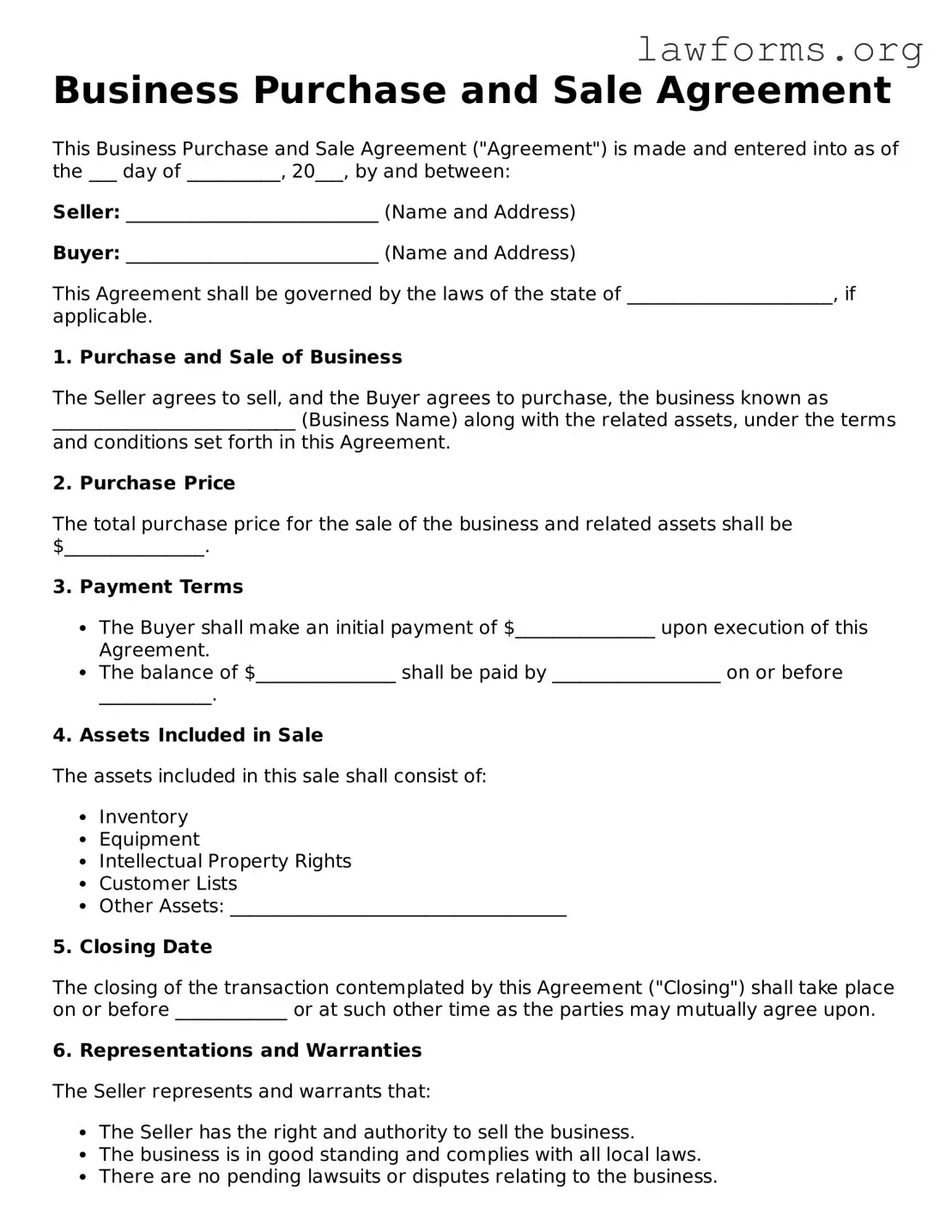Business Purchase and Sale Agreement
This Business Purchase and Sale Agreement ("Agreement") is made and entered into as of the ___ day of __________, 20___, by and between:
Seller: ___________________________ (Name and Address)
Buyer: ___________________________ (Name and Address)
This Agreement shall be governed by the laws of the state of ______________________, if applicable.
1. Purchase and Sale of Business
The Seller agrees to sell, and the Buyer agrees to purchase, the business known as __________________________ (Business Name) along with the related assets, under the terms and conditions set forth in this Agreement.
2. Purchase Price
The total purchase price for the sale of the business and related assets shall be $_______________.
3. Payment Terms
- The Buyer shall make an initial payment of $_______________ upon execution of this Agreement.
- The balance of $_______________ shall be paid by __________________ on or before ____________.
4. Assets Included in Sale
The assets included in this sale shall consist of:
- Inventory
- Equipment
- Intellectual Property Rights
- Customer Lists
- Other Assets: ____________________________________
5. Closing Date
The closing of the transaction contemplated by this Agreement ("Closing") shall take place on or before ____________ or at such other time as the parties may mutually agree upon.
6. Representations and Warranties
The Seller represents and warrants that:
- The Seller has the right and authority to sell the business.
- The business is in good standing and complies with all local laws.
- There are no pending lawsuits or disputes relating to the business.
7. Conditions Precedent
The obligations of the Buyer under this Agreement are subject to the fulfillment of the following conditions:
- Completion of a satisfactory due diligence review.
- Obtaining necessary approvals from relevant authorities.
8. Miscellaneous
This Agreement represents the entire understanding between the parties concerning the subject matter hereof and supersedes all prior agreements and understandings, whether written or oral. Any amendments to this Agreement must be in writing and signed by both parties.
IN WITNESS WHEREOF, the parties have executed this Business Purchase and Sale Agreement as of the date first above written.
Seller: ___________________________ Date: _______________
Buyer: ___________________________ Date: _______________
